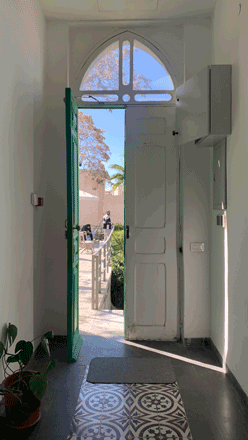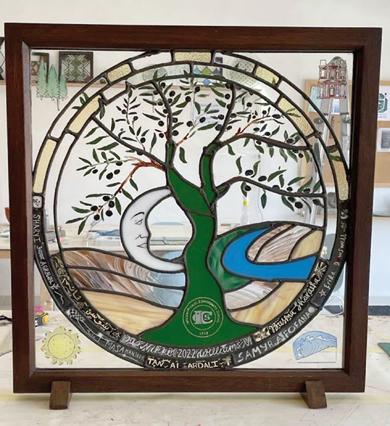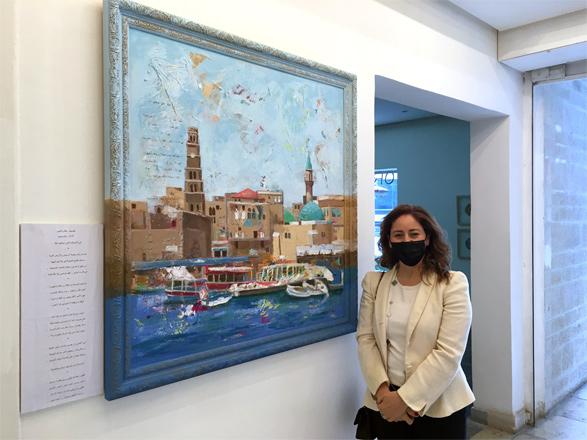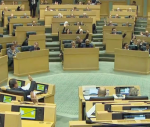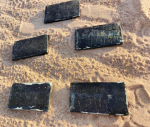You are here
Over 30 artists open studio doors, welcome visitors
By Mays Ibrahim Mustafa - Sep 11,2022 - Last updated at Sep 12,2022

Over 30 artists opened the doors of their studios and invited the public to learn more about their projects and creations at the Mohammad and Mahera Abu Ghazaleh art foundation on Saturday (Photo by Mays Ibrahim Mustafa)
AMMAN — Nearing the end of their nine-month residency at the Mohammad and Mahera Abu Ghazaleh (MMAG) art foundation, over 30 artists opened the doors of their studios and invited the public to learn more about their projects and creations.
During the two-day event, which concluded on friday, Noor Arafa and Yazan Taiser from Aflam Amman collectively spoke with The Jordan Times about their soon-to-be-launched “Virtual Archive of Amman” project.
The collective aims to create an alternative, non-commercial cinematic scene in Amman, according to Arafa.
“We’re exploring Amman’s archives in order to get a full picture of the city’s visual identity and create something that resembles its people,” Taiser told The Jordan Times.
Tala Sadeeq, a painter, spent her time at the foundation on a journey of self-exploration and healing. Her art collection, “Letters to Her” features recreations of her early childhood drawings on a larger scale.
“I wanted to find out who I am, and I think that the easiest way to do that is by reconnecting with my inner child,” Sadeeq told The Jordan Times.
Lina Khaled, another resident, is a photographer, filmmaker and co-founder of Darkroom Amman, an analog photography lab.
“There’s so much intimacy in the idea of physically holding photographs encapsulating past memories,” she told The Jordan Times, noting that her project aims to bring back the culture of printed photos.
Baha Suleiman, the youngest resident at MMAG, is also an analog photographer. He is currently working on a photo archive of Amman, documenting how he sees and experiences the city.
“Unlike fast-based and readily accessible digital photography, the hands-on, long process that comes with developing analog photographs creates a unique bond between me and my work,” the 19-year-old told The Jordan Times.
Paola Farran, an Amman-based Canadian multimedia artist, who uses natural materials such as roselle, spinach, Turmeric, coffee and Pomegranate for her colours, described her work as an “advocate for the environment”.
“As an artist, I try to be as least invasive to nature as I can by creating work that is ecologically conscious and sustainable, keeping in mind the kind of material I’m using, where I’m getting it from and what’s going to happen to the work after I am done with it,” Farran told The Jordan Times.
Ismael Hajr, also known as Zzool, is a Sudanese hip-hop and soul music producer who spent his residency exploring the science behind electronic music.
“I am looking into the different things that influence sound, such as light, heat and motionin order to create my own electronic musical instrument,” Zzool, who views music as his “refuge”, told The Jordan Times.
Amjad Amacher, a 4th-year architecture student at the German Jordanian University, has sign which reads: “Steal the Art” with some of his abstract architectural productions hanging under it outside his studio at MMAG.
“Usually art is something you’re supposed to look at and appreciate from a distance. I think people’s relationship with art should be far less rigid, so I went to the extreme opposite, urging people to grab what they like and take it,” he told The Jordan Times.
Shatha Majali, a Jordanian artist with a Bachelor’s degree in architecture and an MA in ceramic design, noted that her work is inspired by Islamic geometry and embroidery patterns.
“I wanted to shed light on the richness and beauty of Islamic art as a response to the ways my religion is being misrepresented in the media. I also try to shed light on Palestine’s heritage by creating artwork inspired by its traditional embroidery,” she told The Jordan Times.
The current art project of Rasha Shehadeh, the Mythical Ghoul and the Real Tale, traces the Ghoul, an ugly, evil mythic character, present in Palestinian folktales.
“Following my research, I found that stories about the ghoul began to slowly disappear following the Israeli occupation of Palestine, after which the ghoul was replaced with stories of displacement and war,” she told The Jordan Times.
MMAG is a non-profit art foundation based in Amman that supports artists by providing them with a free place to stay, a private work space, funding and mentorship.
Related Articles
AMMAN — After a two-year long hiatus due to the COVID-19 lockdown, the MMAG Foundation in Jabal Amman reopened its doors to visitors this sp
AMMAN — Behind the extended glass windows of the Zujaj Collective’s workshop hang colourful stained glass panels inviting a myriad of colour
AMMAN — A Palestinian artist’s personal journey to discover her roots was brought to life in an exhibition titled “Nostalgia of the Heart” a


